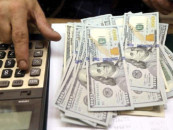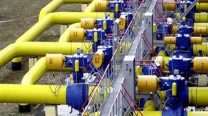Is economy ready to take off?
Faster economic recovery, lower food inflation depend on how agri-sector behaves

Pakistan’s economy is now ready to take off. With the current account in surplus and the rupee appreciating, two things have become clear.
First, imported inflation will now start receding. And second, the decline in the cost of external debt repayments will help the government to keep fiscal imbalance in check. That, in turn, will also reduce the need to borrow excessively from banks, creating room for higher lending by banks to the private sector.
Low interest rates – along with central bank’s post-pandemic concessionary loaning schemes – will create more credit demand from the private sector.
Once actual disbursement of Ashiana housing loans starts, 40-plus industries related to construction will also see a surge in demand both for products and labour, thereby stimulating growth and reducing joblessness.
Low interest rates have already induced private businesses, particularly small and medium enterprises in the services sector, to produce more and pushed demand for consumer credit.
Banks are reporting higher offtake of consumer credit, though part of it is going to people who lost jobs due to 0.4% contraction in gross domestic product (GDP) in the previous fiscal year and business closures during the Covid-19-triggered lockdowns.
But political polarisation is rising. The ruling Pakistan Tehreek-e-Insaf (PTI) and the 11-party Pakistan Democratic Movement (PDM) are at loggerheads. Here again, the blessing in disguise is that the pressure put on Imran Khan’s government by the PDM has made the government realise that the best response to the opposition could be better handling of the economy.
The prime minister knows he will have to bring inflation down – particularly food inflation – and kick-start economic activity for political survival.
That is exactly what his government has lately started doing. In addition, the PTI is also expanding the scope of social safety measures to appease the agitating people and counter the anti-government movement launched by the PDM.
Food inflation
Whereas the rise in rupee’s value will surely tame imported inflation over time, but imported inflation is just part of the general inflationary pressure and its containment will help tackle headline inflation only partially.
More importantly, even subdued imported inflation will not help much in containing food inflation that is a product of lower output of farm produce, hoarding and smuggling of food items, weaker implementation of price controls – and also higher energy prices that make both production and transportation of farm goods costlier.
Large-scale manufacturing (LSM) is taking a bit more time than expected to pick up both because the big corporate is busy retiring previous high-priced loans with fresh low-priced loans instead of using them for production.
By this time, overall demand in the economy could have risen reasonably but uncertainty created by enhanced political polarisation and low export demand are perhaps impeding revival of the overall industrial activity.
Giving stagnant exports a boost is not easy as a second wave of the Covid-19 pandemic has hit almost the entire world, particularly the US and European Union countries where Pakistan has large export markets.
Nevertheless, the government is expecting a better recovery in the LSM output in the first quarter (July-September), the data for which is awaited.
In the July-August period, LSM posted a 3.66% annualised growth. Within LSM, such key industries like textile, food and beverages, coke and petroleum products, pharmaceuticals, chemicals, non-metallic mineral products, paper and board and rubber products have already shown a strong recovery in July and August.
When figures for July-September come out, other sectors ie automobile, iron and steel products, fertilisers, electronics, leather products, engineering goods and wood products are also expected to show some recovery.
The government is also urging export houses to focus more on exports to China where Covid-19 has almost been over and the country’s economy is growing, and neighbouring Afghanistan. It has already removed some irritants to Pak-Afghan trade.
Federation of Pakistan Chambers of Commerce and Industry’s former president Daroo Khan Achakzai says Pak-Afghan trade has lately started growing.
Agriculture sector
Faster economic recovery in the country and taming of politically sensitive food inflation, however, depend a lot on how the agriculture sector behaves.
The Federal Committee on Agriculture (FCA) has recently set ambitious Rabi crop targets – the most important and politically sensitive among them being the wheat harvest target of 26.78 million tons.
Given the fact that last year’s wheat crop fell short of the target by a big margin with actual output of 25.25 million tons against the target of 27.03 million tons, it is too optimistic to believe that next year’s wheat target could be achieved.
The lack of desired level of cooperation in agriculture between the federal and provincial governments and their engagement in blame game in the wake of current wheat crisis could also make it difficult to meet the wheat output target in the spring of next year. That’s a big issue.
FCA says during the Kharif sowing season, sugarcane production has risen to 75.646 million tons against 66.379 million tons in the last season. This higher production, plus import of 300,000 tons of sugar, should help the government to overcome the ongoing sugar crisis in the short term besides contributing to growth in the crops sub-sector of agriculture.
However, according to the FCA, cotton production has declined to just 8.443 million bales, missing the target of 15 million bales by 43% and even lower than last year’s actual output of 9.149 million bales. This should be a real cause of concern for policymakers.
Textile industry needs no less than 14-15 million bales if it works at full capacity. Production of less than 8.5 million bales means huge foreign exchange will have to be spent on the import of cotton. This may lead to a gradual increase in the trade deficit. The trade deficit in the first quarter of current fiscal year has already increased 2.6% to $5.837 billion from $5.689 billion in the first quarter of last fiscal year.
The writer is a mechanical engineer and is doing masters
Published in The Express Tribune, November 9th, 2020.
Like Business on Facebook, follow @TribuneBiz on Twitter to stay informed and join in the conversation.


















COMMENTS
Comments are moderated and generally will be posted if they are on-topic and not abusive.
For more information, please see our Comments FAQ